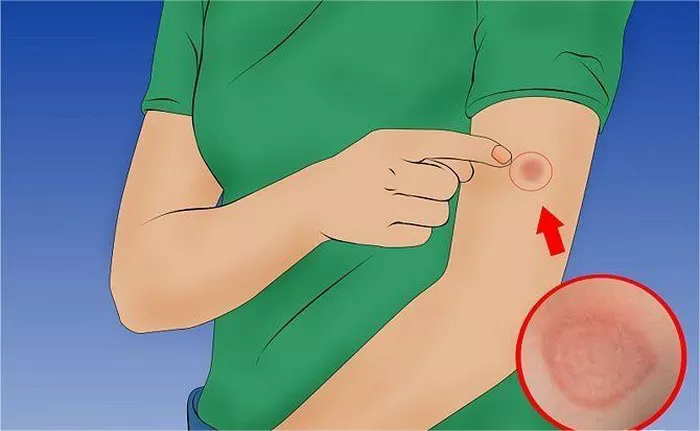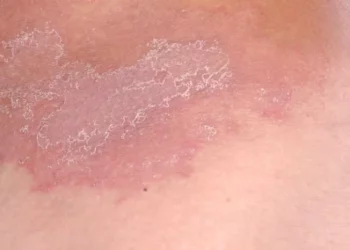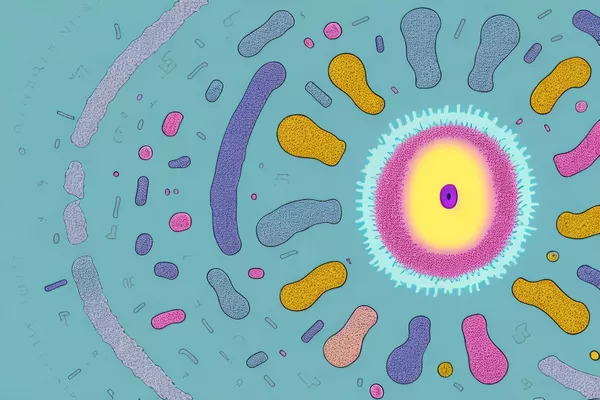Ringworm, a term that often conjures images of worms wriggling under the skin, is a common misconception. Despite its name, ringworm is not caused by a worm but by a fungal infection. This misnomer often leads to confusion about its causes and transmission. One common question that arises is whether dirt or soil can cause ringworm. This article delves into the connection between soil and ringworm, providing a comprehensive understanding of the causes, transmission, and preventive measures associated with this skin infection.
What is Ringworm?
Ringworm, medically known as dermatophytosis, is a superficial fungal infection affecting the skin, hair, and nails. It is caused by a group of fungi called dermatophytes, which thrive on keratin, a protein found in the outer layer of the skin, hair, and nails. The infection presents as a red, circular, and itchy rash with a clear or scaly center, resembling a worm in shape, hence the name “ringworm.”
The Fungi Behind Ringworm
Dermatophytes: The Culprits
Dermatophytes are classified into three genera: Trichophyton, Microsporum, and Epidermophyton. These fungi are highly adaptable and can infect various parts of the body, leading to conditions such as tinea corporis (body), tinea capitis (scalp), tinea pedis (feet), and tinea unguium (nails). Each type of dermatophyte has a preferred habitat, which influences its mode of transmission and the part of the body it infects.
- Trichophyton: Commonly found on human skin, hair, and nails.
- Microsporum: Often found in soil and on animals.
- Epidermophyton: Typically infects the skin and nails.
Transmission of Ringworm
Ringworm is highly contagious and can spread through direct contact with an infected person, animal, or object. Common modes of transmission include:
- Human-to-Human: Direct skin-to-skin contact with an infected person.
- Animal-to-Human: Contact with infected animals, particularly pets like cats and dogs, as well as livestock.
- Object-to-Human: Contact with contaminated objects such as clothing, towels, bedding, and grooming tools.
- Soil-to-Human: Contact with contaminated soil, particularly for individuals who spend a lot of time outdoors, such as gardeners and farmers.
SEE ALSO: Does Ringworm Leave White Patches?
The Soil Connection
1. Can Soil Cause Ringworm?
The role of soil in the transmission of ringworm is a topic of interest and importance, especially for those frequently exposed to soil. Certain species of dermatophytes, particularly those belonging to the genus Microsporum, are geophilic, meaning they naturally reside in soil. Microsporum gypseum and Microsporum nanum are two such examples. These fungi can infect humans and animals when they come into contact with contaminated soil.
2. How Does Soil Get Contaminated?
Soil becomes a reservoir for dermatophytes through various means:
- Animal Shedding: Infected animals shed fungal spores into the environment, including soil, through their skin, fur, or hair.
- Decaying Organic Matter: Dermatophytes can survive and multiply in soil containing decaying organic matter.
- Environmental Conditions: Warm and humid conditions favor the growth and survival of dermatophytes in soil.
3. Risk Factors for Soil-Related Ringworm
Certain activities and conditions increase the risk of contracting ringworm from soil:
- Occupational Exposure: Farmers, gardeners, and landscapers are at higher risk due to frequent soil contact.
- Outdoor Activities: Activities such as hiking, camping, and playing in soil increase the risk, especially in warm and humid climates.
- Bare Skin Exposure: Direct contact with soil, particularly with bare feet or hands, can lead to infection.
Preventing Soil-Related Ringworm
1. Hygiene Practices: Proper hygiene, including washing hands and feet thoroughly after soil contact, reduces the risk of infection.
2. Protective Clothing: Wearing gloves, long sleeves, and closed-toe shoes minimizes direct skin contact with soil.
3. Animal Care: Regular veterinary check-ups and proper hygiene for pets reduce the risk of fungal contamination in the environment.
4. Soil Management: Maintaining dry and clean outdoor environments limits fungal growth. Using compost and other organic matter judiciously can help control the proliferation of dermatophytes in soil.
Diagnosing and Treating Ringworm
1. Clinical Diagnosis
A healthcare provider can often diagnose ringworm based on the appearance of the rash. The characteristic ring-shaped, red, and scaly lesions are usually sufficient for diagnosis. In some cases, additional tests are necessary to confirm the infection and identify the specific dermatophyte involved.
2. Laboratory Tests
Wood’s Lamp Examination: Certain dermatophytes, such as Microsporum, fluoresce under ultraviolet light.
Microscopic Examination: Skin scrapings, hair, or nail samples are examined under a microscope to detect fungal elements.
Culture: Fungal culture involves growing the dermatophyte in a laboratory setting to identify the specific species.
2. Treatment Options
Topical Antifungals: Over-the-counter and prescription antifungal creams, lotions, and powders are commonly used to treat mild to moderate infections.
Oral Antifungals: For more severe or widespread infections, oral antifungal medications may be necessary.
Adjunctive Therapies: Keeping the affected area clean and dry, avoiding scratching, and using medicated shampoos for scalp infections can aid in recovery.
Misconceptions and Myths About Ringworm and Dirt
1. Dirt Alone Doesn’t Cause Ringworm
A common misconception is that dirt itself is a direct cause of ringworm. In reality, it is the presence of dermatophyte spores in the soil that poses a risk. Not all soil is contaminated, and not all contact with soil leads to infection. Factors such as the presence of infected animals, environmental conditions, and individual susceptibility play significant roles.
2. Ringworm is Not a Sign of Poor Hygiene
Another myth is that ringworm is a result of poor personal hygiene. While maintaining cleanliness is important for prevention, ringworm can affect anyone regardless of their hygiene practices. The contagious nature of the fungi and their ability to survive in various environments make it possible for even the most hygiene-conscious individuals to contract the infection.
Conclusion
Ringworm is a common fungal infection that can affect anyone, regardless of age or lifestyle. While direct contact with contaminated soil can lead to infection, it is not the dirt itself but the presence of dermatophyte spores that causes ringworm. Understanding the transmission, risk factors, and preventive measures can help individuals minimize their risk of contracting ringworm from soil and other sources.
Maintaining good hygiene, using protective clothing, and ensuring proper care for pets are essential steps in preventing ringworm. For those who frequently engage in activities involving soil contact, being aware of the potential risks and taking appropriate precautions is crucial. By dispelling myths and focusing on factual information, we can better manage and prevent this common skin infection.
Related Topics:


























